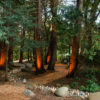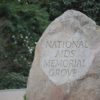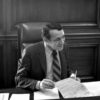Crash Course in Intersectionality

This lesson serves to introduce students the concept of intersectionality to help them gain a new framework for better examining themselves and how they fit into the world around them.

Instructional Resources for California Educators, Students, & Families

This lesson serves to introduce students the concept of intersectionality to help them gain a new framework for better examining themselves and how they fit into the world around them.

This lesson seeks to explore how the industrial revolution changed perceptions of gender roles during the Victorian era. This lesson also seeks to have students observe changes and continuities over time in regards to gender roles in the United States.

This lesson plan seeks to examine the ways in which the United States government ignored a disease that took thousands of American lives. It will debunk fallacies about HIV/AIDS and use the history of AIDS in the US to analyze how powerful activism can be.

This lesson seeks to highlight the ways that people of color and women were marginalized within AIDS activism and AIDS federal research programs.

This lesson seeks to bridge students’ own experiences with mourning and healing to those of people affected by the AIDS crisis. It is vital that students understand the serious impact that the AIDS epidemic had and continues to have on lives. In the course of these three connected lesson plans, students will be mentally prepared to enter into the healing space of The Grove.

Students will analyze 6 -10 (or more depending on the class) primary and secondary sources. These sources will serve as historical evidence for students as they determine their response to the inquiry question. After students read and annotate each source, they will then collaborate and create a DBQ Poster. The DBQ poster process requires students 1) to sort the sources into 2 or more categories, 2) to consider all historically relevant content and 3) construct a group thesis that directly answers the inquiry question.

In this lesson, students will engage in the historical context of the AIDS crisis of the 1980s exploring a timeline of major events and government responses to understand reasons for anger and unrest in the LGBT community. After establishing historical context, students will analyze activist responses looking specifically at different goals and methods used by the activist organization ACT-UP/Los Angeles.

In this lesson, students will familiarize themselves with the concept of intersectionality — how intersecting identities and oppressions shape perspectives and experiences. Through the close reading and discussion of the article “Age, Race, Class, and Sex: Women Redefining Difference” featured in the influential book Sister Outsider: Essays and Speeches by Audre Lorde, students will think critically about how multiple identities and systems of oppressions impact the relationships people have with each other as well as with institutions. Audre Lorde, Black lesbian poet and feminist writer, signed a contract with The Crossing Press on November 19, 1982 to publish her monumental book Sister Outsider: Essays and Speeches. Sister Outsideris celebrated as a historic piece of literature exploring the intersections of race, sexuality, gender, poverty, and politics.

In this lesson, students will analyze the purpose of the Briggs Initiative (Prop 6), which was on the California general election ballot in 1978. The referendum sought to ban gays and lesbians, and potentially supporters of gays and lesbians, from working in California’s public schools. Then, students will evaluate voices of those opposed to the initiative by reading posters and flyers. Harvey Milk, the first openly gay elected official, was a key political figure that led the debate against people like Senator John Briggs and Anita Bryant. Additionally, the Briggs Initiative was challenged by other marginalized groups including African Americans, feminists, and unionists. Finally, students will conduct a close reading of Harvey Milk’s speech given after the defeat of the Briggs Initiative on June 25, 1978 at California’s Gay Freedom Day. The lesson may take 90-120 minutes depending on the reading level of students and the language support needed. To divide the lesson into two days, it is suggested that the close read be done on day 2.

This lesson plan covers gender affirmation processes and the barriers in place to physical and social transitioning in the 1950s up to the 21st century, focusing on the impact that areas of privilege have on this access. The goal of his lesson plan is to explain the historical context of privilege and the role society plays in what is deemed as acceptable.